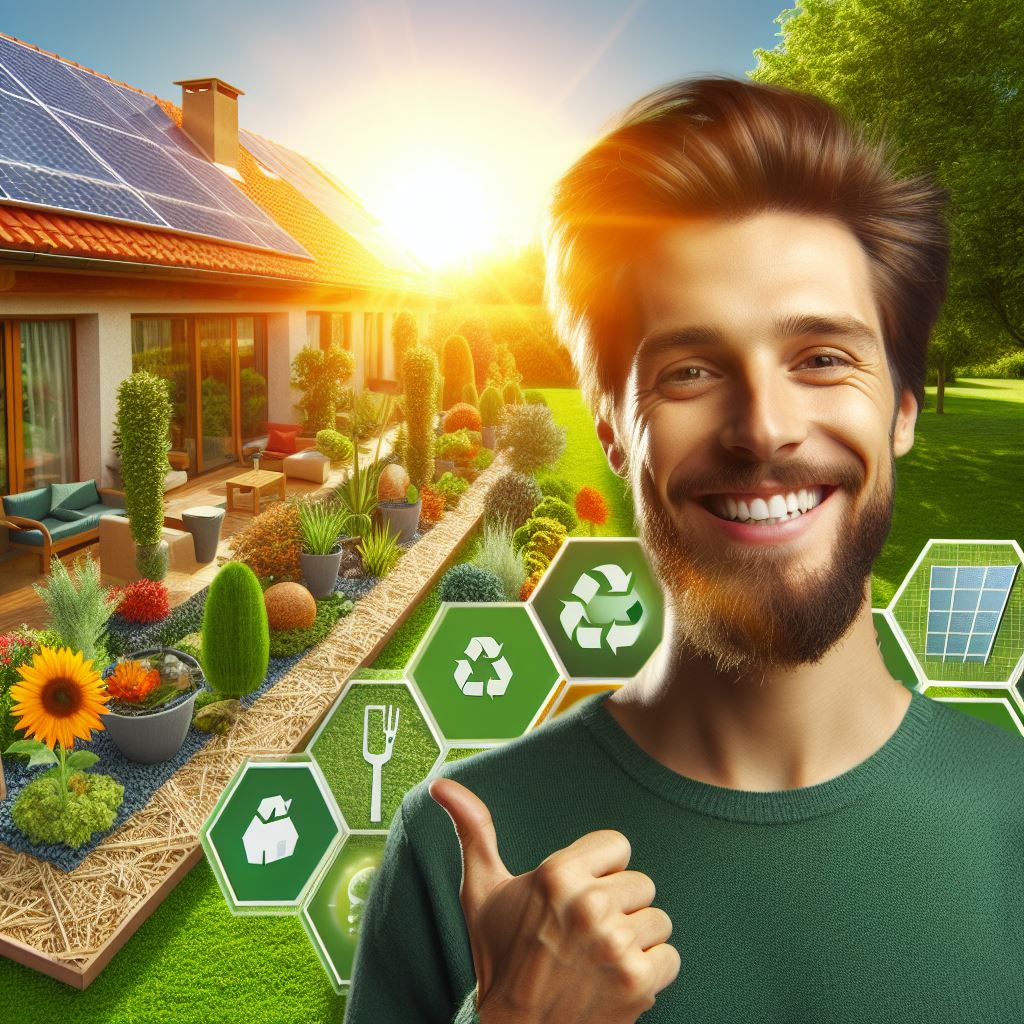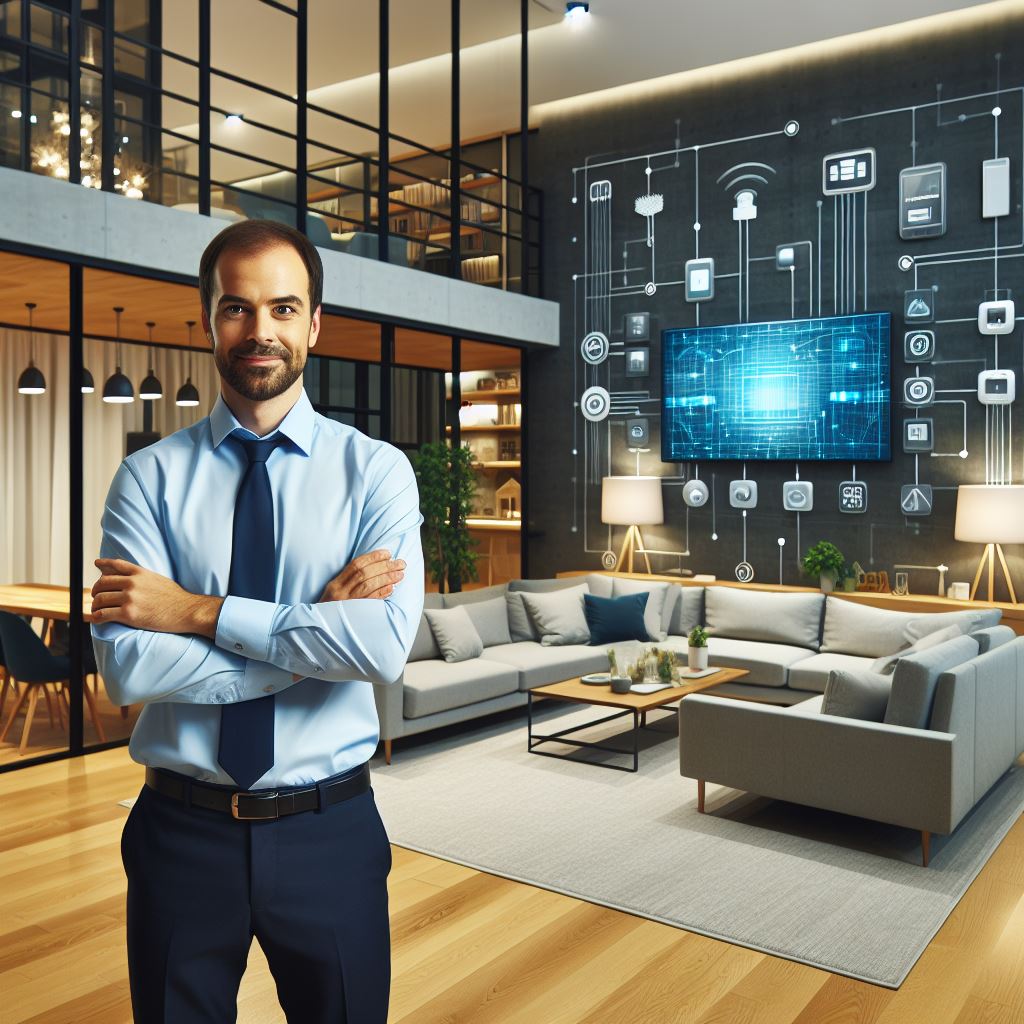Introduction
Definition of Eco-Friendly Exteriors
Eco-friendly exteriors embody a commitment to sustainable living by employing environmentally conscious materials and designs.
These exteriors prioritize responsible practices that contribute to the well-being of the planet.
By incorporating eco-friendly elements, such as recycled materials, energy-efficient features, and green spaces, these exteriors strive to reduce their carbon footprint and promote a healthier environment for current and future generations.
Importance of Green Trends in 2024
As we step into 2024, green trends in exterior design and construction are more pivotal than ever.
With a growing awareness of climate change and the urgent need for sustainable solutions, individuals, businesses, and communities are embracing eco-friendly practices.
This isn’t just a passing fad; it’s a transformative movement that acknowledges the interconnectedness of our choices and their impact on the planet.
In 2024, green trends represent a shift towards responsible living.
This shift is characterized by a heightened awareness of the environmental consequences of our actions, prompting a collective effort to make eco-conscious choices.
The importance of green trends extends beyond aesthetics; it is a commitment to fostering a symbiotic relationship between architecture and nature.
By embracing these trends, we not only reduce our ecological footprint but also contribute to the creation of healthier, more sustainable communities.
In the section that follow, we’ll explore the specific green trends that are shaping exteriors in 2024, from innovative materials to energy-efficient technologies.
As we delve into these trends, it becomes evident that adopting eco-friendly exteriors is not just a design choice; it’s a responsibility we owe to the planet and future generations.
Growing Demand for Eco-Friendly Exteriors
The demand for eco-friendly exteriors is growing rapidly as people become more aware of the impact of climate change on our planet.
In recent years, there has been a significant shift towards sustainable living, and this includes the choice of materials and design for the exterior of homes and buildings.
Increasing awareness about climate change
One of the main reasons for the growing demand for eco-friendly exteriors is the increasing awareness about climate change.
People are now more informed about the negative consequences of environmental pollution and the importance of reducing our carbon footprint.
As a result, there is a greater emphasis on adopting sustainable practices in all aspects of life, including the design and construction of buildings.
Individuals are now actively seeking out materials and designs that are environmentally friendly and energy-efficient.
They understand that their choices can make a significant impact on reducing greenhouse gas emissions and preserving natural resources for future generations.
Shift towards sustainable living
Another factor contributing to the growing demand for eco-friendly exteriors is the overall shift towards sustainable living.
People are embracing a lifestyle that minimizes harm to the environment and promotes sustainable practices.
This includes everything from using renewable energy sources to recycling and reducing waste.
When it comes to the exterior of a building, individuals are seeking out materials that are eco-friendly, such as recycled or sustainable wood, low-maintenance vegetation, and energy-efficient lighting.
They are also incorporating features like rainwater harvesting systems, solar panels, and green roofs into their designs to maximize sustainability.
Benefits of eco-friendly exteriors
There are numerous benefits to choosing eco-friendly exteriors, both for the individual and the environment.
Firstly, environmentally friendly materials are typically safer for human health, as they do not release harmful pollutants or chemicals into the air.
This is particularly important for individuals with allergies or respiratory conditions.
In addition to health benefits, eco-friendly exteriors also have a positive impact on the environment.
They reduce energy consumption by providing better insulation and ventilation, resulting in lower heating and cooling costs.
Furthermore, sustainable materials help to conserve natural resources and reduce waste.
Eco-friendly exteriors can also enhance the aesthetic appeal of a building.
Many sustainable materials offer a unique and modern look, adding character and style to the exterior design.
This can increase the value of the property and attract potential buyers or tenants.
In essence, the demand for eco-friendly exteriors is on the rise due to increasing awareness about climate change and a shift towards sustainable living.
People are realizing the benefits of choosing environmentally friendly materials and designs, both for their own health and for the well-being of the planet.
The trend towards eco-friendly exteriors is likely to continue growing in the coming years as more individuals recognize the importance of reducing their environmental impact.
Read: 2024’s Top 10 Interior Design Trends for Homes
Sustainable Materials for Exteriors
In order to create eco-friendly exteriors, it is important to consider sustainable materials.
These materials not only promote a greener environment but also offer several benefits in terms of performance and durability.
High-performance insulation
Insulation plays a crucial role in maintaining the energy efficiency of a building.
In 2024, eco-friendly exteriors will focus on using high-performance insulation materials that offer superior thermal resistance.
One such material is cellulose insulation, which is made from recycled paper products.
It not only reduces energy consumption but also helps in minimizing waste by utilizing recycled materials.
Spray foam insulation is another popular option that provides excellent insulation and air sealing properties.
It can significantly reduce heating and cooling costs by minimizing energy loss through walls and roofs.
Renewable and recyclable siding options
When it comes to the exterior cladding of a building, choosing renewable and recyclable siding options is essential to achieve an eco-friendly design.
One sustainable siding option is wood, which is a renewable resource.
However, it is crucial to opt for wood that comes from certified sustainable sources to ensure responsible forestry practices.
Fiber cement siding is another eco-friendly choice that is made from a mixture of cement, sand, and cellulose fibers.
It offers exceptional durability, dimensional stability, and resistance to rot and pests.
Energy-efficient windows and doors
Windows and doors are important components of a building’s envelope, and choosing energy-efficient options can significantly reduce energy consumption.
Double-pane or triple-pane windows with low-emissivity (low-E) coatings can effectively reduce heat transfer and provide better insulation.
They help in maintaining a comfortable indoor temperature and reducing reliance on heating and cooling systems.
Similarly, energy-efficient doors with proper insulation can prevent drafts and minimize air leakage.
They can improve overall thermal performance and reduce the need for excessive heating or cooling.
Environmentally friendly roofing materials
Roofing materials play a vital role in protecting a building and its occupants from environmental elements.
Opting for environmentally friendly options can contribute to a greener exterior design.
Metal roofing is a sustainable choice as it is recyclable and can last for a long time.
It reflects solar heat, reducing cooling costs, and can be made from recycled materials.
Slate roofing is another eco-friendly option that is long-lasting and requires minimal maintenance.
It is made from natural stone and offers excellent durability and fire resistance.
Green roofs are gaining popularity as an environmentally friendly roofing solution.
They consist of vegetation and provide insulation, stormwater management, and improve air quality in urban areas.
In fact, sustainable materials for exteriors are crucial in creating eco-friendly designs.
High-performance insulation, renewable and recyclable siding options, energy-efficient windows and doors, and environmentally friendly roofing materials all contribute to a greener and more efficient building.
Read: Ensuring Quality: Monitoring Your Contractor’s Work
Energy-Efficient Landscaping
Native plants and drought-resistant landscaping
One of the green trends in 2024 for eco-friendly exteriors is the use of native plants and drought-resistant landscaping.
By incorporating plants that are naturally adapted to the local climate, less water is required for irrigation.
Native plants are those that naturally grow in a specific region and have adapted to the local environmental conditions.
They require minimal water, pesticides, and fertilizer, reducing the overall environmental impact.
Drought-resistant landscaping involves creating outdoor spaces that can withstand periods of dry weather without the need for excessive watering.
This can be achieved by selecting plants with low water requirements and using techniques like mulching to retain moisture.
Rainwater harvesting systems
Rainwater harvesting systems are another energy-efficient landscaping trend in 2024.
These systems collect rainwater and store it for later use, reducing reliance on municipal water sources.
Rain barrels are commonly used for small-scale rainwater harvesting.
They collect rainwater from rooftops and store it for use in watering plants, which reduces water consumption and lowers utility bills.
Larger rainwater harvesting systems can include underground storage tanks or cisterns that can collect and store a significant amount of rainwater for various outdoor uses such as irrigation and cleaning.
Efficient outdoor lighting solutions
Eco-friendly exteriors in 2024 also involve the use of efficient outdoor lighting solutions that minimize energy consumption and light pollution.
LED lighting is a popular choice for energy-efficient outdoor lighting.
LED bulbs use less energy and have a longer lifespan compared to traditional incandescent lights, reducing maintenance and replacement costs.
Motion sensor lights can be installed to ensure that outdoor lights are only activated when needed.
This helps to conserve energy by avoiding unnecessary lighting during idle periods.
Smart irrigation systems
Smart irrigation systems are technological advancements that optimize water usage in landscaping, making them a valuable trend in eco-friendly exteriors for 2024.
These systems use sensors and weather data to determine the precise amount of water needed for plants.
They adjust irrigation schedules based on environmental factors, preventing overwatering and conserving water resources.
Some smart irrigation systems can be controlled remotely through mobile apps, allowing homeowners to monitor and adjust watering settings conveniently.
This level of control ensures that water is used efficiently and minimizes waste.
In short, energy-efficient landscaping plays a vital role in creating eco-friendly exteriors.
By incorporating native plants, implementing rainwater harvesting systems, using efficient outdoor lighting, and adopting smart irrigation systems, homeowners can significantly reduce their environmental impact while enjoying beautiful and sustainable outdoor spaces.
Read: Building a Solid Relationship with Your Contractor

Eco-Friendly Exterior Designs
Vertical gardens and living walls
Vertical gardens and living walls are becoming increasingly popular in eco-friendly exterior designs.
These innovative features bring nature into urban spaces and provide a range of environmental benefits.
Vertical gardens improve air quality by filtering pollutants and releasing oxygen into the atmosphere.
They also increase biodiversity by attracting birds, bees, and butterflies to the area.
These green walls act as natural insulation, reducing energy consumption and lowering utility bills.
Vertical gardens can be created using a variety of plants, allowing for endless design possibilities.
Green roofs and rooftop gardens
Green roofs and rooftop gardens are another green trend that is expected to continue growing in 2024.
These green spaces on top of buildings offer numerous advantages.
Green roofs provide insulation, reducing the need for heating and cooling, thus lowering energy consumption.
They absorb rainwater, reducing stormwater runoff and alleviating pressure on drainage systems.
Rooftop gardens create a natural habitat for plants and wildlife, promoting urban biodiversity.
These green spaces also contribute to improving air quality by capturing dust particles and absorbing carbon dioxide.
Eco-conscious paint alternatives
Eco-conscious paint alternatives are gaining popularity as people become more aware of the harmful effects of traditional paints.
These environmentally friendly options provide a healthier and more sustainable choice.
VOC-free paints emit lower levels of toxic chemicals, resulting in better indoor and outdoor air quality.
Natural paints made from ingredients like clay, plant extracts, and minerals are biodegradable and non-toxic.
Some companies even offer paint made from recycled materials, reducing waste and conserving resources.
Eco-conscious paint alternatives come in a wide range of colors and finishes, allowing for creativity and style.
Solar-powered outdoor features
Solar-powered outdoor features are an excellent way to incorporate renewable energy into eco-friendly exterior designs.
These features harness the power of the sun to provide lighting, heating, and more.
- Solar outdoor lighting eliminates the need for electricity and reduces energy consumption.
- Solar heating panels can be used to warm outdoor spaces, such as swimming pools and patios.
- Solar-powered water features, like fountains and irrigation systems, conserve water and energy.
- Solar shading systems, such as awnings and pergolas, provide shade while generating clean energy.
In general, eco-friendly exterior designs are taking center stage in 2024.
Vertical gardens, green roofs, eco-conscious paint alternatives, and solar-powered outdoor features are just a few of the trends reshaping the way we design and interact with our outdoor spaces.
By embracing these trends, we can create a more sustainable and greener future.
Read: 3D Modeling: Revolutionizing Home Design
Innovative Technologies for Eco-Friendly Exteriors
Smart sensors for energy management
Implementing innovative technologies is key to creating eco-friendly exteriors. Smart sensors are at the forefront of energy management in outdoor spaces.
These sensors have the capability to detect occupancy and adjust heating and cooling systems accordingly.
By doing so, they optimize energy consumption and significantly reduce environmental impact.
Additionally, these sensors help homeowners save on utility bills by minimizing unnecessary energy usage.
Energy-efficient outdoor appliances
Energy-efficient outdoor appliances are also vital for eco-friendly exteriors. LED lighting is a prime example of an energy-efficient outdoor appliance.
These lights use significantly less energy compared to traditional lighting options, making them an eco-friendly choice.
Furthermore, solar-powered watering systems are another essential outdoor appliance.
By harnessing the power of the sun, these systems minimize the need for excessive water usage and reduce reliance on non-renewable energy sources.
Home automation systems for optimized energy consumption
Home automation systems are an integral part of optimized energy consumption in exteriors.
These systems offer comprehensive control and monitoring capabilities for various outdoor aspects, including lighting and irrigation.
By scheduling and adjusting energy usage based on specific needs and preferences, homeowners can minimize waste and enhance sustainability in their outdoor spaces.
Moreover, these systems provide convenience and ease of use, making eco-friendly practices more accessible to homeowners.
In review, innovative technologies play a significant role in creating eco-friendly exteriors.
Smart sensors, energy-efficient outdoor appliances, and home automation systems are all essential components of an environmentally conscious outdoor space.
By integrating these technologies, homeowners can achieve optimal energy management, reduce their carbon footprint, and save on utility bills.
Embracing these green trends in 2024 will contribute to a more sustainable future.
Government Initiatives and Incentives
Tax credits for eco-friendly upgrades
The government recognizes the importance of eco-friendly exteriors and has implemented various initiatives and incentives to encourage individuals and businesses to adopt sustainable practices.
One of the key incentives is tax credits for eco-friendly upgrades.
Homeowners who make environmentally friendly upgrades to their exteriors, such as installing solar panels or energy-efficient windows, can qualify for tax credits.
These credits provide financial benefits, reducing the overall cost of the upgrades and making them more affordable for homeowners.
Building codes promoting sustainable exteriors
Another government initiative to promote eco-friendly exteriors is the implementation of building codes that prioritize sustainability.
These codes ensure that new constructions or renovations meet certain environmental standards, reducing their negative impact on the environment.
Building codes may require the use of sustainable materials, such as recycled or locally sourced materials, for exterior construction.
They may also mandate the inclusion of energy-efficient systems and technologies, such as insulation and high-performance windows, to minimize energy consumption.
Green building certifications and standards
Furthermore, the government supports the adoption of green building certifications and standards, which serve as voluntary guidelines for sustainable exterior practices.
These certifications and standards provide a framework for individuals and businesses to assess and improve the environmental performance of their exteriors.
By obtaining green building certifications, such as LEED (Leadership in Energy and Environmental Design) certification, property owners can showcase their commitment to sustainability.
These certifications consider various factors, including energy and water efficiency, material selection, and ecological impact, ensuring that exteriors are environmentally responsible.
In addition to certifications, the government encourages compliance with green building standards.
These standards outline specific criteria and best practices for design, construction, and operation, ensuring that exteriors meet the highest sustainability standards.
Compliance with these standards can lead to recognition and incentives from the government.
Government initiatives and incentives play a crucial role in promoting eco-friendly exteriors.
Tax credits make sustainable upgrades more accessible, building codes enforce sustainable practices, and certifications and standards guide individuals and businesses towards environmentally responsible exteriors.
These measures not only benefit the environment but also contribute to energy savings and cost reduction for property owners in the long run.
By making environmentally conscious choices for exteriors, individuals and businesses can create a more sustainable future while enjoying the advantages of reduced energy consumption and improved property value.
Benefits of Eco-Friendly Exteriors
Lower energy bills and reduced carbon footprint
By using eco-friendly materials and technologies, homeowners can significantly lower their energy consumption.
Energy-efficient windows and doors, proper insulation, and solar panels can all contribute to reduced energy bills.
These improvements not only save homeowners money but also help in reducing their carbon footprint.
When less electricity is needed, the demand for fossil fuels decreases, resulting in a cleaner environment.
Improved indoor air quality and human health
Eco-friendly exteriors often prioritize the use of low-toxicity materials, which can greatly improve indoor air quality.
Traditional building materials can release harmful chemicals, leading to various health issues like respiratory problems and allergies.
Opting for eco-friendly exteriors helps eliminate these risks, promoting a healthier and safer living environment.
Improved air quality contributes to the overall well-being of individuals living in these homes.
Increased property value and market appeal
In recent years, there has been a significant increase in demand for eco-friendly homes.
Home buyers are increasingly aware of the benefits and value associated with sustainable living.
Properties with eco-friendly exteriors are seen as more attractive in the real estate market.
Such homes are often viewed as a long-term investment due to their energy-saving features and reduced maintenance costs.
As the demand for eco-friendly homes continues to rise, property values are expected to increase over time.
In a nutshell, opting for eco-friendly exteriors offers numerous benefits for homeowners.
From lower energy bills and reduced carbon footprint to improved indoor air quality and human health, these advantages cannot be overlooked.
Additionally, eco-friendly exteriors increase the property value and market appeal of homes, making them a wise long-term investment.
With the green trends of 2024, it is clear that eco-friendly exteriors are not just a passing fad but an essential consideration for homeowners who prioritize sustainability and a healthier living environment.
Conclusion
Recap of key points
Throughout this post, we have explored the green trends in eco-friendly exteriors that we can expect in 2024.
From solar-powered roofing to vertical gardens, these trends are aimed at creating sustainable and environmentally-friendly living spaces.
We discussed the importance of choosing sustainable materials such as recycled wood, bamboo, and reclaimed metal for exterior construction.
These materials not only reduce waste but also minimize the carbon footprint of the building process.
In addition, we highlighted the significance of energy-efficient windows and insulation for reducing energy consumption.
By investing in triple-pane windows and eco-friendly insulation, homeowners can significantly decrease their reliance on fossil fuels for heating and cooling.
Encouragement to embrace eco-friendly exteriors
It is crucial for individuals, businesses, and communities to embrace these eco-friendly exterior trends.
By doing so, we can contribute to the preservation of our planet and create healthier and more sustainable living environments.
From using rainwater harvesting systems to implementing low-maintenance landscaping, every effort counts in our collective journey towards a greener future.
By making conscious choices when it comes to our exteriors, we can make a substantial impact on reducing pollution and mitigating climate change.
Future outlook for sustainable living
Looking ahead, the future of sustainable living appears promising.
As technology advances and awareness grows, we can expect even more innovative and eco-friendly exterior solutions.
From the integration of green roofs with living spaces to the development of self-sustaining energy systems, the possibilities for creating truly sustainable exteriors are endless.
As society continues to prioritize environmental consciousness, we can anticipate a shift towards greener and more sustainable living spaces.
Embracing eco-friendly exteriors is not just a trend but a necessity.
By incorporating sustainable materials, energy-efficient designs, and conscious landscaping choices, we can pave the way for a brighter and greener future for generations to come.
Let us all join hands in creating a world where eco-friendly exteriors are the norm, not the exception.




